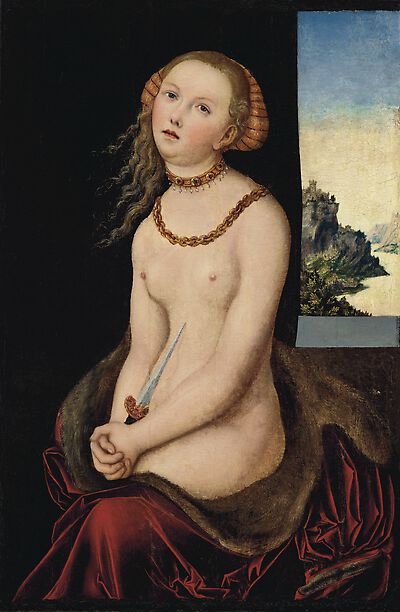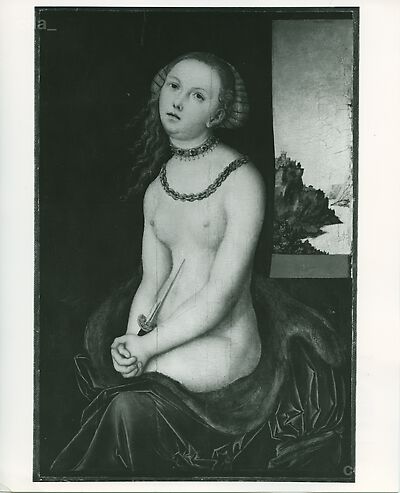The painting shows the classical heroine Lucretia as a three quarter length seated nude figure, depicted holding a cloak against a dark backdrop with a view of a landscape. Lucretia is turned slightly towards the left side of the image and her head is also turned in this direction, whereas
The painting shows the classical heroine Lucretia as a three quarter length seated nude figure, depicted holding a cloak against a dark backdrop with a view of a landscape. Lucretia is turned slightly towards the left side of the image and her head is also turned in this direction, whereas she gazes upward into vacant space. Both her hands rest in her lap and clasp the dagger, which she points at her chest. She sits on her fur-trimmed cloak that only covers her knees. Her jewellery comprises of a linked chain and a neckband. In addition her hair is pinned up under a snood with only isolated loose strands. The background is dark, but a window in the right section of the image indicates that she is seated in a room, and offers a view of a mountainous landscape with a river.
According to the legend Lucretia lived in the 6th century BC and was the beautiful and virtuous wife of the roman Collatinus. The roman King's son - Sextus Tarquinius fell in love with her. During a stay in her house Sextus threatened to kill her and shame her honour if she did not surrender to him. After the rape Lucretia had her father and husband vow vengeance and then she stabbed herself. The event led to an uprising in which the royal family was overthrown and the Roman Empire became a Republic. Depictions of Lucretia who was seen as the epitomy of female virtue, chastity, fidelity and honour enjoyed great popularity, particularly in the 16th century. [Literature: Bierende 2002, Follak 2002, Livius 1909]

